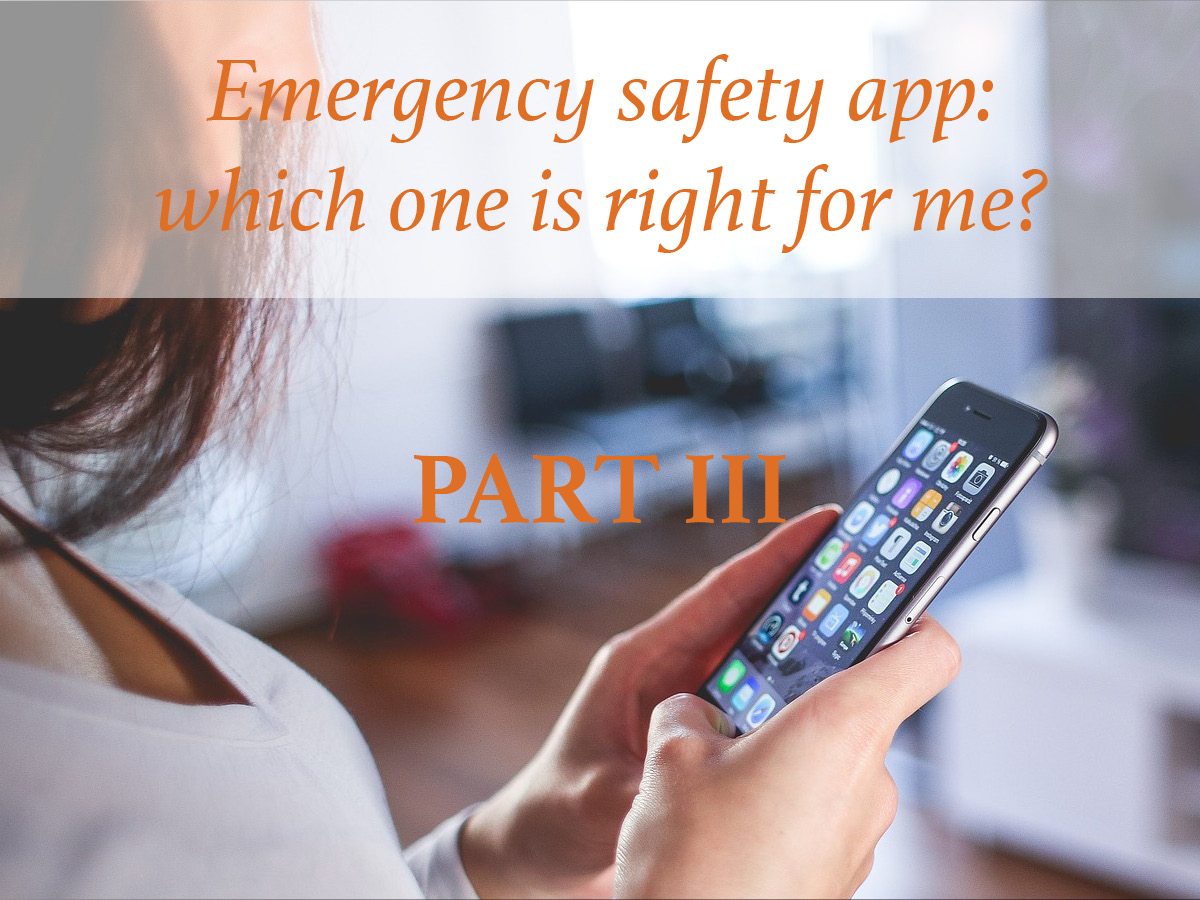How to choose an emergency safety apps and incorporate it into a safety plan
With so many different apps, and the fact that some of them duplicate what you can already do with your phone, how do you decide if you need an app, and if so, which one to choose? Below are more tips on whether you need an emergency safety app and how you can make it work for you.
Does the app/service meet a need or a gap?
If you have a smartphone, you can already do most of what the emergency safety apps promise to do: which is ring, text, or email a contact or ring 000. Moreover, it’s probably better for you to make that call or text yourself, so you can communicate directly with your emergency contact or with 000.
However, some of the additional features of these apps, such as automatically contacting your emergency contacts with a pre-written message or ringing 000 when you cannot speak or have access to a phone, can be helpful as part of your safety strategies. If these additional features are what you need, then a safety app can be useful.
Does the app/service create additional safety risks?
Whether it is a mobile app that is downloaded onto your smartphone or a wearable device like a necklace or tag consider if it will create any safety risks. Each survivor will have different safety risks because it will depend on what is happening in their lives. For some survivors, if the abusive person knows that she is planning on reaching out for help, this could cause the abusive behaviour to escalate. For some abusers, knowing that the survivor has additional options to reach out for help or evidence of their behaviour, it might cause them to stay away. If it is more dangerous for you to use any of these services, strategise on how you can access help in a safer way.
Do you already use something that does what the app/service does?
The other thing to consider is if you already use or have something that that does what the app/service promises to do. Some smartphones (specifically the Samsung Galaxy and iPhones) have emergency features built into the phone that will ring 000 and also notify emergency contacts. They aren’t exactly the same as some of the emergency safety apps, but they are similar.
Another issue to consider is that if you don’t use an app very often, you may forget how to use it when an emergency occurs. It’s important that if you need it, you can quickly get to it. If it’s something you already use all the time, such as using the phone function on your phone or typing out a message, even if it takes a couple more taps, it still might be faster than opening a rarely used app and trying to figure out how it works during an emergency.
Did you test the app?
Apps can be buggy, faulty, or simply not work as described. If you are using an app for your safety, test it to make sure that it works the way you expect it to. Sometimes the description of how an app works is quite different to the experience of using it. Many of these apps use your location. However, location accuracy depends on a wide range of factors, including where you are, the settings on our phone, and how well your phone is accessing the mobile network.
If possible, test it in an environment that will be closest to when you think you’ll need it. For example, if you think you’ll need it while traveling to a certain area, test it in that area to see if it will work the way it’s supposed to.
Know how the app works. Go through the app, look at the settings, and test the features. Don’t be afraid that you’re sending emergency alerts to your contacts – tell them that you’re testing the app and they can ignore it. It’s better to send some false emergency alerts while testing it than to rely on it in an actual emergency and have it not work. Let your contacts know when you have finished testing, so they respond to future alerts.
Don’t let the app create a false sense of security or expectation
It is important to understand that emergency safety apps are meant to supplement and support your safety plan. They are not meant to take the place of a well-rounded, thorough safety plan. They are also not meant to take the place of the police or any other community service.
The response you receive in an emergency is subject to limitations, even if you have more than one way of contacting the police or personal contacts. If your emergency contacts are too far away or don’t know how to respond and help you, alerting them that you are in danger isn’t going to do much good. Keep these realities in mind when you create your safety plan and plan around them if needed. An emergency safety app can support your safety plan only if it meets your needs and works for you.
